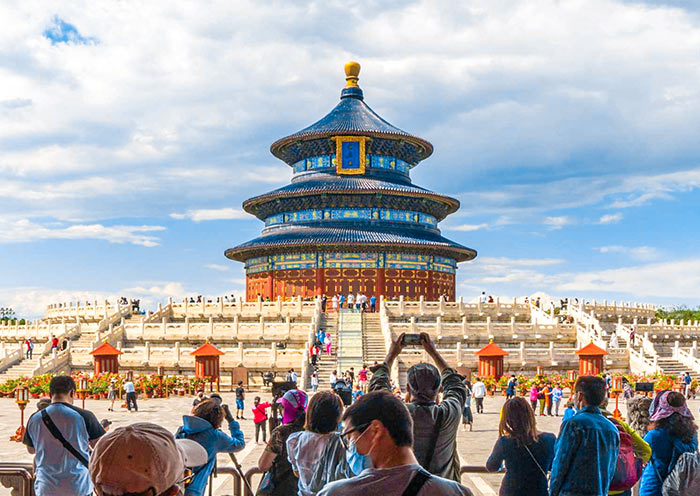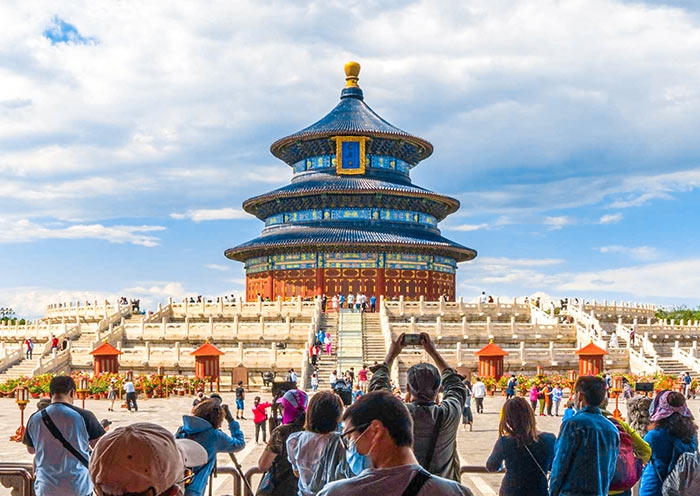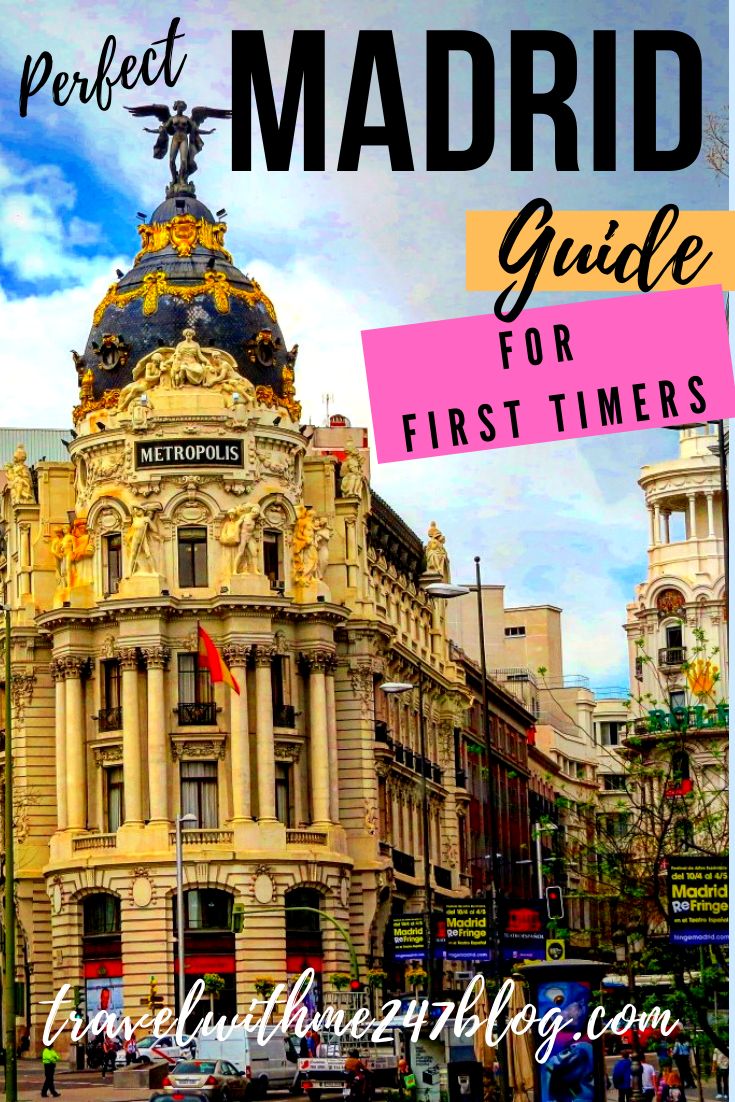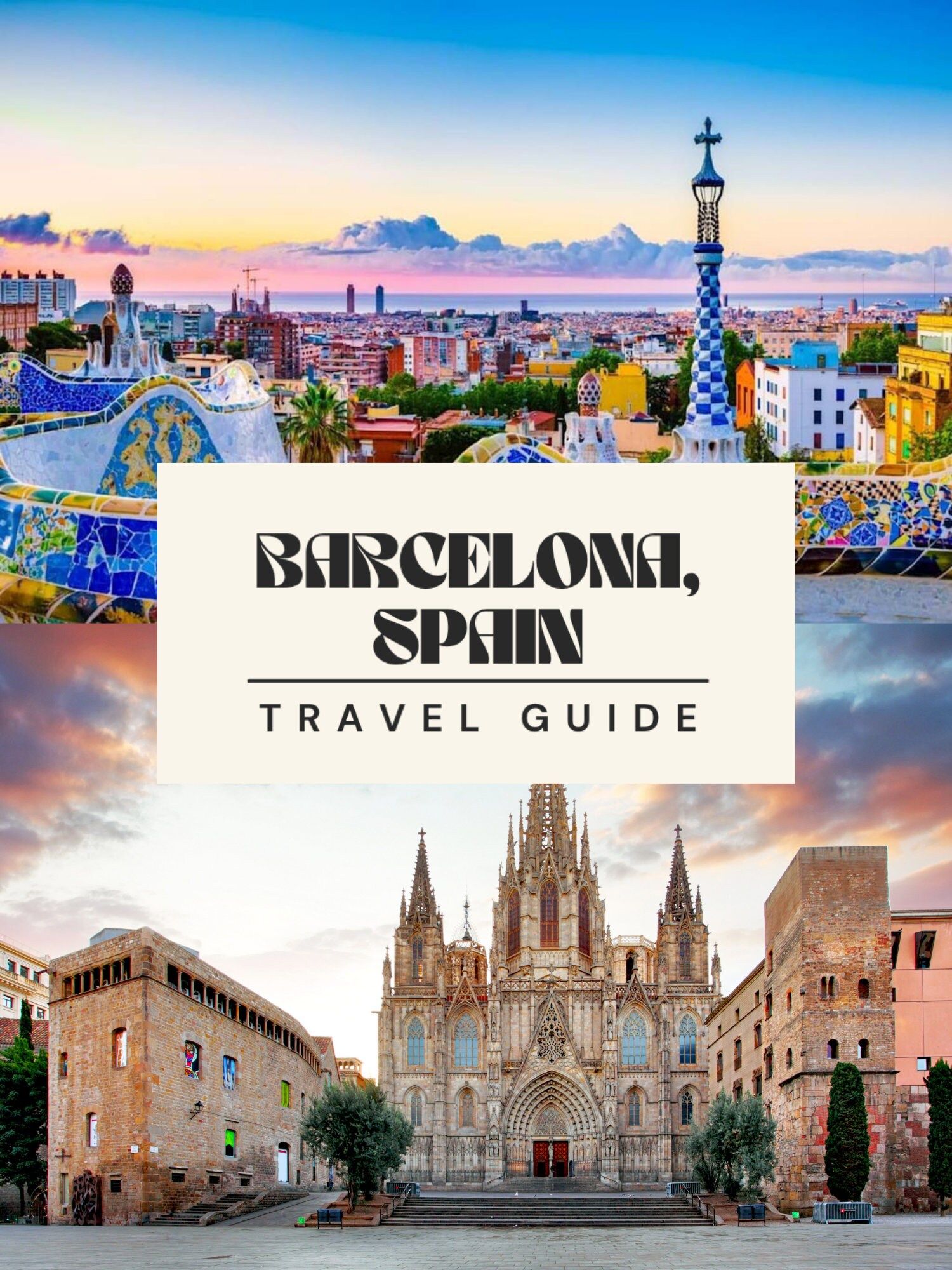
Beijing, the pulsating heart of China, is a city that whispers tales of imperial grandeur, revolutionary fervor, and a relentless march into the future. More than just a capital, it’s a living museum, a vibrant metropolis where ancient traditions intertwine seamlessly with cutting-edge modernity. From the awe-inspiring Forbidden City to the bustling hutongs, Beijing offers an immersive journey through China’s rich history and dynamic present. This comprehensive guide will navigate you through its most captivating attractions, essential travel tips, and the very essence of what makes Beijing an unforgettable destination.
A Glimpse into Beijing’s Storied Past
Beijing’s history stretches back over three millennia, evolving from a small settlement into a formidable capital. Its prominence truly began with the Yuan Dynasty in the 13th century, which established it as Dadu, the "Great Capital." However, it was the Ming Dynasty (1368-1644) that cemented its imperial destiny, constructing the iconic Forbidden City and the Temple of Heaven, shaping the city’s layout and architectural grandeur that we largely see today.
Related Articles about Beijing: A Tapestry of Time and Tradition:
- Switzerland: A Symphony of Peaks, Precision, and Pristine Beauty
- Switzerland: The Ultimate Travel Guide to Alpine Majesty and Urban Charm
- Beijing: A Journey Through Time and Tradition
- Qatar: A Jewel of the Arabian Peninsula – Your Comprehensive Travel Guide
- India: A Tapestry of Wonders – Your Ultimate Guide to Experiencing the Subcontinent
The Qing Dynasty (1644-1912) continued this legacy, expanding the imperial gardens and palaces. The 20th century marked a dramatic shift, with the fall of the empire, the establishment of the Republic of China, and finally, the proclamation of the People’s Republic of China in 1949, with Beijing as its capital. This tumultuous period left an indelible mark, evident in the city’s blend of ancient imperial sites and revolutionary landmarks. Today, Beijing stands as a testament to its resilience and a beacon of China’s rapid development.
Main Attractions: Unveiling Beijing’s Treasures
Beijing boasts an embarrassment of riches when it comes to attractions. Here are some of the absolute must-sees:
-
The Forbidden City (Palace Museum): The undisputed crown jewel of Beijing, the Forbidden City served as the imperial palace for 24 emperors of the Ming and Qing dynasties. This vast complex, a UNESCO World Heritage site, is a masterpiece of traditional Chinese palatial architecture, spanning over 180 acres and housing over 9,000 rooms. Wander through its grand courtyards, ornate halls, and serene gardens, imagining the lives of emperors, concubines, and eunuchs who once inhabited this forbidden realm. Allow at least half a day to explore its immense scale.
-
The Great Wall of China: No visit to Beijing is complete without experiencing the sheer magnificence of the Great Wall. While sections like Badaling are most accessible, they can be crowded. For a more authentic and less touristy experience, consider visiting Mutianyu, known for its well-preserved watchtowers and stunning scenery, or Jiankou, a wilder, more challenging section for the adventurous. The wall snakes across mountains, offering breathtaking panoramic views that have captivated visitors for centuries.
-
Tiananmen Square: Adjacent to the Forbidden City, Tiananmen Square is one of the largest public squares in the world and a site of immense historical and political significance. It’s flanked by monumental buildings, including the Great Hall of the People, the National Museum of China, and the Mausoleum of Mao Zedong. While its historical events are somber, its sheer scale and the surrounding architecture are impressive.
-
The Temple of Heaven: Another UNESCO World Heritage site, the Temple of Heaven was where emperors performed solemn rituals and prayed for good harvests. Its iconic Hall of Prayer for Good Harvests, a circular, triple-eaved building, is a stunning example of Ming Dynasty architecture. The vast park surrounding the temple is also a vibrant hub for locals engaging in tai chi, dancing, and singing, offering a glimpse into everyday Beijing life.
-
The Summer Palace: This imperial garden, also a UNESCO World Heritage site, was once a summer retreat for the imperial family. It’s a masterpiece of landscape garden design, featuring a vast lake, hills, palaces, temples, and bridges. Rent a boat on Kunming Lake or stroll along the Long Corridor, adorned with thousands of intricate paintings, for a truly picturesque experience.
-
Hutongs: These narrow alleyways, lined with traditional courtyard houses (siheyuan), offer a charming glimpse into old Beijing. Explore areas like Shichahai or Nanluoguxiang (though the latter is now quite commercialized). You can rent a bicycle, take a rickshaw tour, or simply wander on foot, soaking in the atmosphere, peeking into courtyards, and perhaps enjoying a local snack.
-
Lama Temple (Yonghe Temple): This active Tibetan Buddhist monastery is one of the most important and beautiful Tibetan Buddhist sites outside of Tibet. Its impressive halls house intricate statues, vibrant thangkas, and a towering 18-meter-tall Buddha statue carved from a single sandalwood tree. The serene atmosphere offers a spiritual respite from the bustling city.
-
798 Art District: For a dose of contemporary Beijing, head to the 798 Art District. Housed in former military factory buildings, this area is now a thriving hub for art galleries, studios, cafes, and boutiques. It’s a fascinating space to explore modern Chinese art and experience Beijing’s creative pulse.
Travel Tips for a Seamless Beijing Experience
Navigating a city as vast and culturally rich as Beijing can be daunting, but with a few key tips, your trip will be much smoother:
-
Visa Requirements: Ensure you have the necessary visa to enter China well in advance of your travel dates.
-
Language: Mandarin is the official language. While English is spoken in major tourist areas and hotels, learning a few basic Mandarin phrases like "Ni hao" (hello), "Xie xie" (thank you), and "Duoshao qian?" (how much?) will be greatly appreciated. Consider using a translation app.
-
Connectivity: Purchase a local SIM card or rent a portable Wi-Fi device for easy internet access. Be aware that many Western websites and apps (like Google, Facebook, Instagram, WhatsApp) are blocked in China. You’ll need a VPN to access them.
-
Cash vs. Mobile Payments: While cash is still accepted, China is largely a cashless society. Mobile payment apps like Alipay and WeChat Pay are dominant. If you don’t have these, consider using a credit card (though acceptance can be limited outside major hotels and shops) or carrying enough cash for smaller purchases. Some hotels can help you set up a temporary payment account.
-
Book in Advance: For popular attractions like the Forbidden City, booking tickets online in advance is highly recommended, especially during peak season, to avoid long queues and ensure entry.
-
Comfortable Shoes: You’ll be doing a lot of walking, so comfortable footwear is essential.
-
Respectful Etiquette: Be mindful of local customs and etiquette. Dress modestly when visiting temples. It’s generally polite to accept offers of food and drink.
-
Scams: Be aware of common tourist scams, such as the "tea ceremony" or "art student" scams. Politely decline if something feels suspicious.
-
Water: Drink bottled water only.
Best Time to Visit Beijing
Beijing experiences distinct seasons, each offering a unique charm:
-
Spring (April to May): This is arguably the best time to visit. The weather is pleasant, with mild temperatures and blooming flowers. It’s perfect for exploring the outdoors and enjoying the city’s parks. However, it can also be a popular tourist season.
-
Autumn (September to October): Another ideal time, with crisp air, clear skies, and vibrant autumn foliage. The temperatures are comfortable, and the scenery is stunning, especially around the Great Wall and imperial gardens. This is also a peak tourist season, particularly around the National Day holiday (October 1st).
-
Summer (June to August): Summers in Beijing can be hot and humid, with frequent rainfall. While still a viable time to visit, be prepared for the heat and potential rain showers. It’s a good time to visit indoor attractions.
-
Winter (November to March): Winters are cold and dry, with temperatures often dropping below freezing. While less comfortable for extensive outdoor exploration, it offers fewer crowds and the magical possibility of seeing the city blanketed in snow. Attractions like the Forbidden City can be particularly atmospheric in winter.
Nearby Hotels: Accommodations for Every Budget
Beijing offers a vast range of accommodation options, from luxurious international brands to budget-friendly hostels and charming boutique hotels. Here are some recommendations in key areas:
-
Near the Forbidden City/Tiananmen Square: This is a prime location for first-time visitors, offering easy access to many major attractions.
- Luxury: The Peninsula Beijing, Mandarin Oriental Wangfujing, Grand Hyatt Beijing.
- Mid-Range: Beijing Hotel, Park Plaza Beijing Wangfujing.
- Budget: Hostels and guesthouses can be found in the hutong areas nearby.
-
Sanlitun/Guomao (CBD): Known for its vibrant nightlife, upscale shopping, and modern business district, this area is ideal for those seeking a more contemporary experience.
- Luxury: The Opposite House, Rosewood Beijing, Waldorf Astoria Beijing.
- Mid-Range: Novotel Beijing Peace, Courtyard by Marriott Beijing.
-
Hutong Areas (e.g., Shichahai, Nanluoguxiang): For a more authentic and atmospheric stay, consider boutique hotels and guesthouses within the hutongs.
- Boutique/Mid-Range: The Orchid Hotel, Peking Garden Hotel, Leo Hostel (a popular choice for budget travelers).
-
Near the Olympic Park: If you’re interested in the modern architectural marvels of the Olympic Games, this area offers good hotel options.
- Mid-Range: InterContinental Beijing Olympic Park, Holiday Inn Express Beijing Minzuyuan.
Local Food: A Culinary Adventure
Beijing’s culinary scene is a delicious reflection of its history and culture. Prepare your taste buds for an unforgettable journey:
-
Peking Duck (Beijing Kao Ya): This is the undisputed king of Beijing cuisine. Crispy, succulent duck, roasted to perfection, is served with thin pancakes, scallions, cucumber, and sweet bean sauce. It’s an experience you cannot miss.
-
Zhajiangmian (Fried Sauce Noodles): A hearty and flavorful noodle dish, featuring thick noodles topped with a savory sauce made from minced pork and fermented soybean paste, usually accompanied by shredded cucumber and radish.
-
Jiaozi (Dumplings): A staple across China, Beijing offers excellent dumplings, both boiled and pan-fried. They come with various fillings, including pork, cabbage, and chives.
-
Baozi (Steamed Buns): Soft, fluffy steamed buns filled with savory or sweet ingredients. Popular fillings include pork, vegetables, and red bean paste.
-
Hot Pot (Huoguo): A communal dining experience where raw ingredients are cooked in a simmering broth at your table. Beijing-style hot pot often features a spicy broth and a variety of thinly sliced meats, vegetables, and tofu.
-
Tanghulu: A classic Beijing street snack, these candied hawthorn berries on a skewer are a delightful sweet treat, especially in autumn and winter.
-
Douzhi (Fermented Mung Bean Milk): A unique and acquired taste, this traditional Beijing drink is made from fermented mung beans. It has a sour and pungent flavor.
-
Street Food: Explore the night markets and street food stalls for a wide array of snacks, from grilled skewers to various fried delights.
Transportation Options: Getting Around Beijing
Beijing has an incredibly efficient and extensive public transportation system, making it easy to explore the city:
-
Subway System: Beijing boasts one of the world’s longest and most comprehensive subway networks. It’s clean, efficient, and connects most major attractions. Purchase a Yikatong card for easy tap-and-go travel.
-
Buses: The bus network is extensive and very affordable, but can be more challenging for non-Mandarin speakers due to route signage and announcements.
-
Taxis: Taxis are readily available, but it’s crucial to ensure the meter is used. Ride-hailing apps like Didi (China’s equivalent of Uber) are also widely used and often more convenient.
-
Cycling: Renting a bicycle is a fantastic way to explore the hutongs and smaller streets, offering a more intimate perspective of the city. Bike-sharing schemes are abundant.
-
High-Speed Rail: For day trips to nearby attractions like the Great Wall or to other cities, Beijing’s numerous high-speed rail stations offer excellent connectivity.
Beijing is a city that will captivate your senses and leave an indelible mark on your soul. It’s a place where history breathes in every ancient stone and where the future is being forged with incredible speed. So pack your bags, open your mind, and prepare to be amazed by the unparalleled magic of Beijing.








